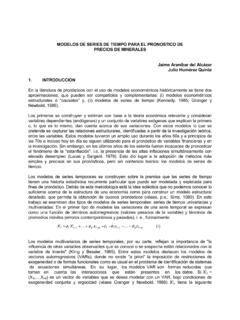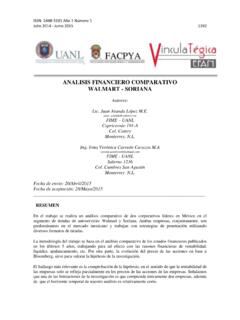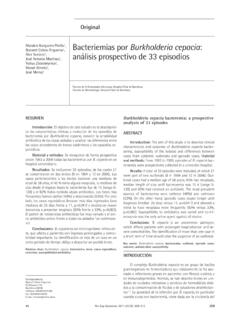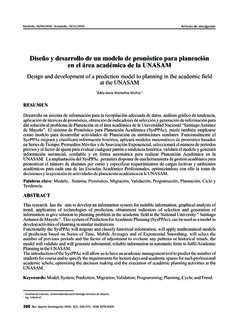Transcription of GuardION: Practical Mitigation of DMA-based …
1 GuardION: Practical Mitigation of DMA-basedRowhammer Attacks on ARMV ictor van der Veen1, Martina Lindorfer3, Yanick Fratantonio4, HarikrishnanPadmanabha Pillai2, Giovanni Vigna3, Christopher Kruegel3, Herbert Bos1,and Kaveh Razavi11 Vrije Universiteit University Santa the last two years, the Rowhammer bug transformedfrom a hard-to-exploit DRAM disturbance error into a fully weaponizedattack vector. Researchers demonstrated exploits not only against desk-top computers, but also used single bit flips to compromise the cloudand mobile devices, all without relying on any software hardware-level mitigations cannot be backported, a search for soft-ware defenses is pressing. Proposals made by both academia and indus-try, however, are either impractical to deploy, or insufficient in stoppingall attacks: we presentrampage, a set of DMA-based Rowhammer at-tacks against the latest Android OS, consisting of (1) a root exploit, and(2) a series of app-to-app exploit scenarios that bypass all mitigate Rowhammer exploitation on ARM, we proposeguardion, alightweight defense that prevents DMA-based attacks the main attackvector on mobile devices by isolating DMA buffers with guard evaluateguardionon 22 benchmark apps and show that it hasa negligible memory overhead ( MB on average).
2 We further showthat we can improve system performance by re-enabling higher orderallocations after Google disabled these as a reaction to previous IntroductionFor decades, defensive research on memory corruption could brush aside thethreat of exploitation via hardware bugs as outside the threat model, if notscience fiction entirely. The frightening list of devastating Rowhammer attacks,however, published at one security venue after another [5, 12, 16, 24, 28, 30], sug-gests that we are in urgent need of Practical defenses. In this paper, we propose apractical, isolation-based protection that stops DMA-based Rowhammer attacksby carefully surrounding DMA buffers with DRAM-level guard rows. We focus2V. van der Veen et work on mobile devices as here, the problem is even more worrisome: unlikedesktop and server machines, it is impossible to perform hardware on mobile Rowhammer hardware bug at its coreconsists of the leakage of charge between adjacent memory cells on a denselypacked DRAM chip [19].
3 Thus, whenever the CPU reads or writes one row ofbits in the DRAM module, the neighboring rows are ever so slightly , this does not create problems as DRAM periodically refreshes thecharge in its cells, well in time to preserve data integrity. However, an attackerwho deliberately hits the same rows many times within a refresh interval maycause the charge leakage to accumulate to the point that a bit flips in an adjacentrow and modify memory that she does not own. Initially considered a curiosity ofrelatively minor importance, researchers have shown that attackers can harnessRowhammer to completely subvert a system s security [5, 8, 16, 24, 26, 28, 30].Clearly, the threat of Rowhammer attacks for smartphones and tablets isparticularly serious, as replacing the memory chips of such devices is not an op-tion.
4 In addition, power consumption is a prime concern in the mobile world, andmany of the hardware-level solutions (such as ECC memory or higher DRAM refresh rates) consume more power. Furthermore, even though newer standardssuch as LPDDR4 [18] discuss the adoption of Rowhammer mitigations, , Tar-get Row Refresh (TRR), they do so only as anoptionalprotection mechanism,thus making LPDDR4 chips vulnerable as well [20, 28].Existing software defenses are not the challenges of de-ploying hardware solutions, the development of effective software-based defensesis particularly important to protect mobile users against Rowhammer our analysis, we systematically explore existing proposals, which fall intotwo categories: techniques that attempt to prevent attackers from triggering bitflips, and those that focus on making it impossible for a bit flip to bring phys-ical memory into an exploitable state ( 4).
5 We argue that both directions havelimitations, either in terms of practicality (for instance because they require spe-cific hardware features), or worse, in terms of effectiveness (as they still allowfor Rowhammer exploitation). We demonstrate this ineffectiveness by present-ing novel attacks that circumvent all existing proposed and implemented defensetechniques ( 5).The need solutions need to strike a balancebetween security and practicality a defense against Rowhammer attacks shouldnot incur unacceptable performance overhead, nor should it severely reduce theamount of available memory. Conversely, it should be effective and hard to by-pass. In this work, we proposeguardion, which effectively and efficiently blocksall known DMA-based Rowhammer attacks against mobile devices ( 6).
6 Guardionbuilds on the observation that triggering bit flips on ARM-basedmobile platforms is facilitated by using uncached memory, accessible throughDMA allocations [28]. Albeit other techniques exist, most are either impracticalor easily addressable on ARM. For example, thecacheflush()system call thatis exposed to userland by the Android kernel, only flushes up to the Level 2cache, and thus fails to force repetitive DRAM accesses for a single address. Ad-GuardION: Practical Mitigation of DMA-based Rowhammer Attacks3ditionally, ARMv8 s unprivileged cache flush instruction can easily be disabledby the kernel and thus do not pose a security thus explicitly limit our defense to the more generic class of DMA-basedRowhammer attacks that rely on uncached memory.
7 Doing so has an importantimplication for our design: instead of attempting to isolate all sensitive infor-mation, which is impractical, we can instead isolate only DMA allocations. Aswe will show, DMA allocations constitute only a very small fraction of all allo-cations in the system, and we can hence afford to apply expensive fine-grainedisolation foreachDMA allocation using guard rows. In our design, we isolateDMA allocations from the rest of the system by using two guard rows, one at thetop and another at the bottom. With this scheme, an attacker can no longer useDMA allocations to trigger bit flips in any memory page in the system except inthe guard rows. In effect, this design defends against Rowhammer by eradicatingthe ability to inject bit flips in sensitive GuardION defend against any Rowhammer exploit?
8 Enforces that DMA-based Rowhammer attacks can no longer flip bits inanother process or kernel memory. Attacks that induce bit flips by means ofcache eviction sets another popular Rowhammer technique on x86 are stillpossible. The (1) lento, and (2) idiosyncratic nature of these attacks, however,make them harder to launch in practice. First, increased access times will resultin less flipped bits at a slower rate. Second, a substantial amount of reverseengineering is required for such attacks, and this work must be repeated for eachtarget architecture [12, 28]. Thus, although not stopping all possible attacks,guardionreduces the attack surface summary, we make the following contributions: We systematically explore the design of software defenses, and show thatexisting proposals are either not Practical or not effective.
9 To back our claims, we presentrampage, a set of DMA-based Rowhammerattack variants on of (1) a root exploit, and (2) aseries of app-to-app attacks. We introduceguardion, a software-based defense that prevents DMA-basedRowhammer simple, efficient, and has low the spirit of open science, we provide our modifications to the Android sourcecode for Threat ModelWe consider an attacker with full control over a zero-permissions holding, unpriv-ileged Android app that is running on the victim s device. She seeks to mount aDMA-based Rowhammer attack, similar to recent work [28], to either (1) esca-late her privileges to root, or (2) compromise other apps present on the victim device is hardened against other classes of Rowhammer attacks ( ,GLitch [12]) and has the latest Android security updates van der Veen et BackgroundThis section describes the relevant background information about the Rowham-mer vulnerability and its exploitation.
10 This is meant to provide only a briefintroduction, for a more in-depth discussion, we point the interested reader topapers exclusively focusing on this topic [19, 22, 30]. The Rowhammer VulnerabilityRowhammer is a hardware fault in dynamic random-access memory (DRAM)chips. DRAM chips work by storing charges in an array ofcells. The charge stateof a given cell encodes a binary value, a memory bit. Cells are organized inrows,which, at the hardware level, is the smallest unit for a memory access. Whena memory row is accessed, the content of its cells is copied to a so-calledrowbuffer. During this copy operation, the row s cells are discharged, and they arethen recharged with their initial from the row access process, memory cells tend to leak theircharged state (due to their nature), and their content thus needs to be refreshedregularly.








